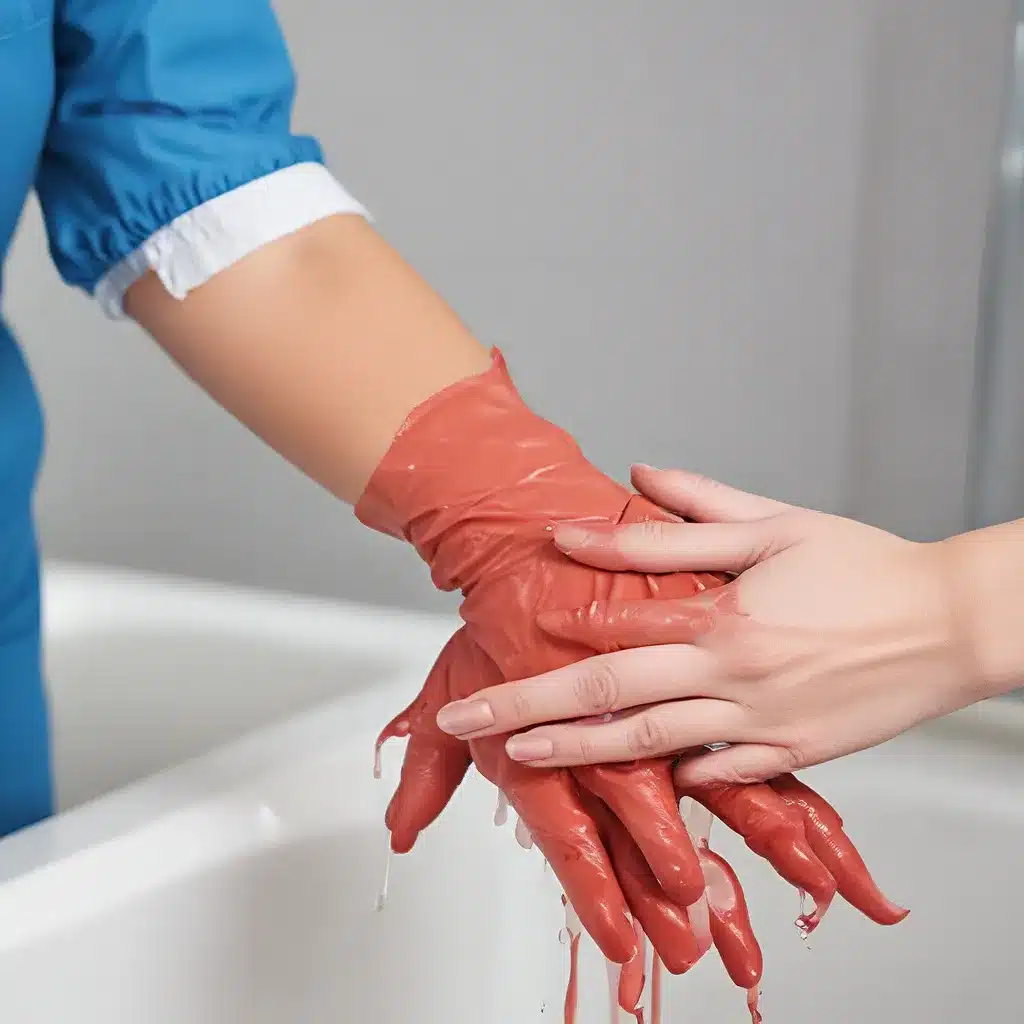
As someone who’s spent their fair share of time elbow-deep in all sorts of workplace messes, I can tell you that cleaning up blood and body fluids is no walk in the park. It’s a task that requires thoughtfulness, caution, and a commitment to safety that goes beyond your average spill on the breakroom floor.
The Unseen Dangers
You see, when it comes to bodily fluids, we’re not just talking about the ick factor. Nope, there’s a whole world of microscopic nasties just waiting to hitch a ride if we’re not careful. Bloodborne pathogens like hepatitis B, hepatitis C, and HIV can all be transmitted through direct contact with infected blood or other potentially infectious materials. And the tricky part is, you can’t always tell who’s carrying what.
That’s why it’s crucial for anyone who might find themselves dealing with these types of spills – whether you’re a first responder, a custodian, or just the unfortunate soul who drew the short straw at the office – to be properly trained and equipped. Because the last thing you want is to end up taking home more than you bargained for.
OSHA’s Guidance for Worker Protection
Thankfully, the good folks at the Occupational Safety and Health Administration (OSHA) have put together some pretty comprehensive guidance on how to keep workers safe when it comes to bloodborne pathogens. According to their Bloodborne Pathogens Standard, employers are required to provide a safe working environment and ensure that employees have the proper personal protective equipment (PPE) and training to handle these kinds of situations.
At a minimum, that means gloves, gowns, eye protection, and face masks – the whole nine yards. And it’s not just about suiting up; workers also need to be well-versed in the right cleaning and disposal procedures. We’re talking thorough decontamination, properly sealing contaminated waste, and knowing what to do if an exposure incident occurs.
Tackling the Tougher Scenarios
Now, I know what you’re thinking – “Easy for OSHA to say, but what about when things get really messy?” Well, the National Institute for Occupational Safety and Health (NIOSH) has got your back. They’ve been out in the field, visiting prisons and jails to study the procedures used to protect healthcare workers from bloodborne diseases.
And let me tell you, some of those scenarios make a typical office spill look like a walk in the park. Imagine trying to clean up an entire cell block after a violent incident. Or dealing with a backed-up sewer system that’s overflowing with who-knows-what. Yikes!
But even in these extreme cases, the key is to stay calm, follow the protocols, and never underestimate the power of a good pair of gloves. As the NIOSH researchers found, frontline workers who are properly trained and equipped are far less likely to suffer exposures and the potential health consequences that come with them.
Infection Control in the Workplace
Of course, it’s not just about cleaning up the mess. As the good folks at Better Health Channel in Victoria, Australia point out, effective infection control in the workplace is all about prevention.
Employers have a legal obligation to provide a safe working environment, which means ensuring that the right procedures and equipment are in place to minimize the risk of exposure. That could mean anything from proper hand-washing stations and disinfectant supplies to specialized training on how to handle sharps and dispose of contaminated materials.
And it’s not just about the obvious stuff, either. Even simple things like keeping the workplace clean and tidy can go a long way in preventing the spread of germs. After all, you never know where those pesky pathogens might be hiding.
Staying Vigilant and Staying Safe
At the end of the day, dealing with blood and body fluids in the workplace is no joke. It requires a level of diligence and attention to detail that can sometimes feel like overkill. But trust me, when you’re facing down a truly nasty spill, you’ll be mighty grateful for that extra bit of preparation.
So, whether you’re a seasoned pro or a newbie just starting out, remember to always assume that everyone is potentially infectious. Follow the proper procedures to the letter, use the right PPE, and never let your guard down. Because the stakes are just too high to take any chances.
And who knows, maybe someday we’ll live in a world where these kinds of clean-ups are a thing of the past. But until then, let’s keep doing our part to keep ourselves and our colleagues safe, one spill at a time. After all, a little vigilance goes a long way when it comes to safeguarding our workplaces.


